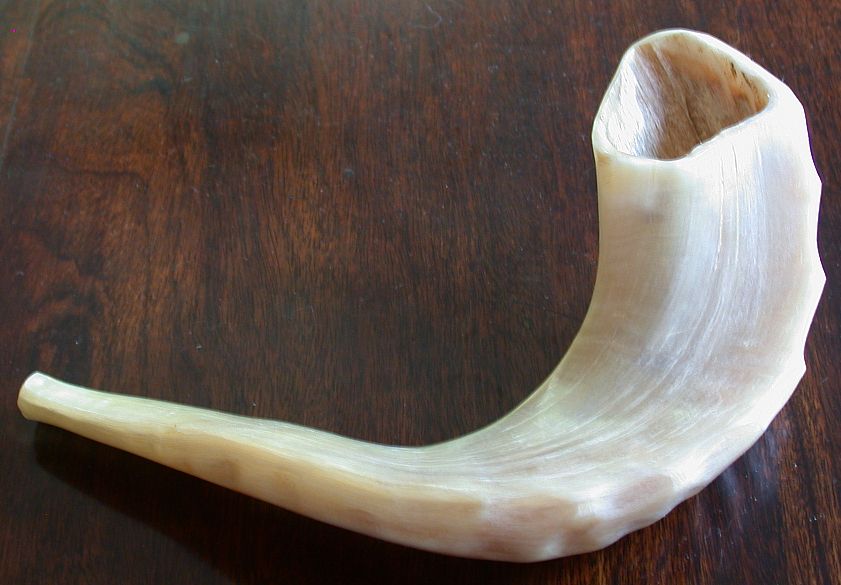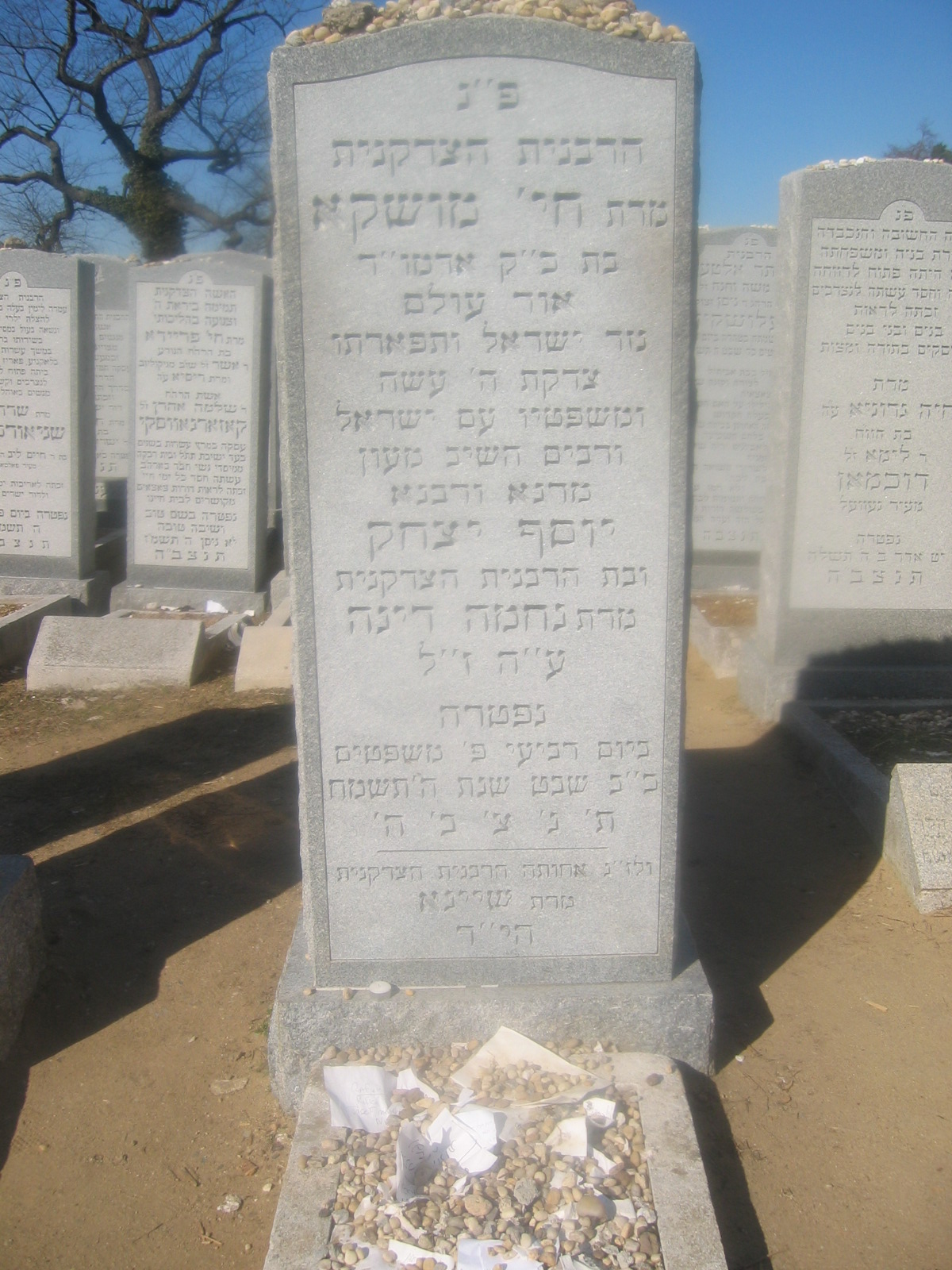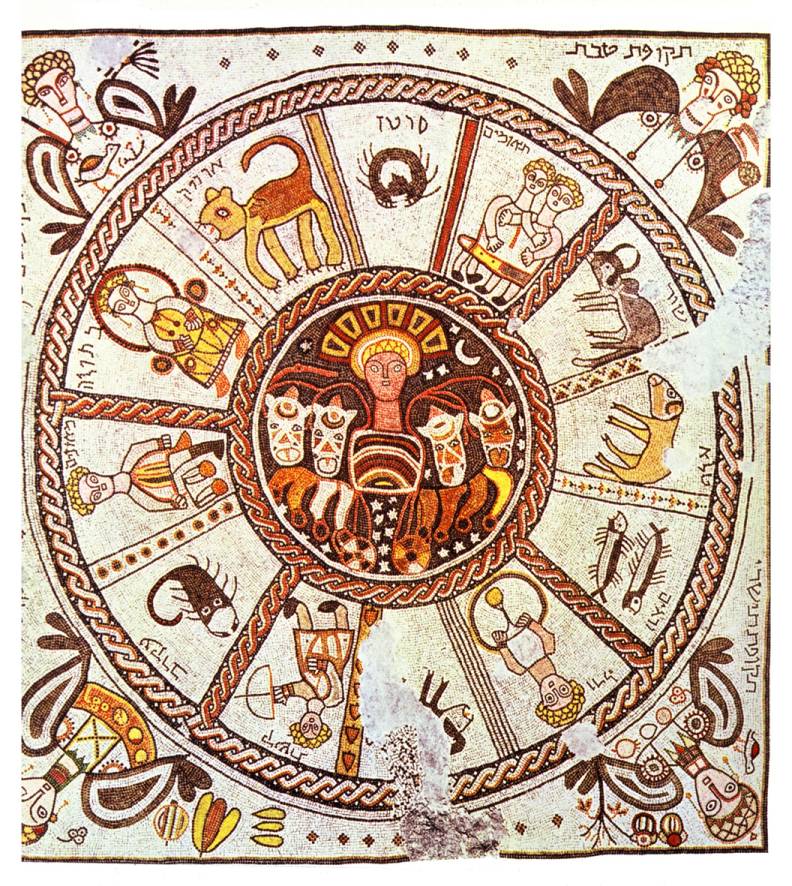|
Shvat
Shevat (, , ; from ) is the fifth month of the civil year starting in Tishre (or Tishri) and the eleventh month of the ecclesiastical year on the Hebrew calendar starting in Nisan. It is a month of 30 days. Shevat usually occurs in January–February on the Gregorian calendar. The name of the month was taken from the Akkadian language during the Babylonian Captivity. The assumed Akkadian origin of the month is , meaning "strike", that refers to the heavy rains of the season. In Biblical sources, the month is first mentioned by this name in the book of prophet Zechariah ( Zechariah 1:7). Holidays * 15 Shevat – Tu Bishvat In Jewish history and tradition *1 Shevat – Moses repeats the Torah (Deuteronomy 1:3) *2 Shevat (circa 1628 BC) – Asher born *10 Shevat (1950) - Death of the Previous Rebbe, the 6th Chabad Rebbe. *10 Shevat (1951) the Lubavitcher Rebbe formally accepts the leadership of the Chabad-Lubavitch movement by reciting the discourse "Bati Legani". *17-1 ... [...More Info...] [...Related Items...] OR: [Wikipedia] [Google] [Baidu] |
Tu Bishvat
Tu BiShvat () is a Jewish holiday occurring on the 15th day of the Hebrew month of Shevat. It is also called ''Rosh HaShanah La'Ilanot'' (), literally " New Year to the Trees". In contemporary Israel, the day is celebrated as an ecological awareness day, and trees are planted in celebration. Etymology The name ''Tu BiShvat'' is originally from the Hebrew date of the holiday, which occurs on the fifteenth day of Shevat. "Tu" stands for the Hebrew letters Tet and Vav, which together have the numerical value of 9 and 6, adding up to 15. The date may also be called "Ḥamisha Asar BiShvat" (, 'Fifteenth of Shevat'). Talmud Tu BiShvat appears in the Mishnah in Tractate Rosh Hashanah as one of the four new years in the Jewish calendar. The discussion of when the New Year occurs was a source of debate among the rabbis, who argued: * The first of Nisan is the "new year for kings and festivals". * The first of Elul is the "new year for the tithe of cattle"; the tannaim Eleazar ... [...More Info...] [...Related Items...] OR: [Wikipedia] [Google] [Baidu] |
Chabad-Lubavitch
Chabad, also known as Lubavitch, Habad and Chabad-Lubavitch (; ; ), is a dynasty in Hasidic Judaism. Belonging to the Haredi (ultra-Orthodox) branch of Orthodox Judaism, it is one of the world's best-known Hasidic movements, as well as one of the largest Jewish religious organizations. Unlike most Haredi groups, which are self-segregating, Chabad mainly operates in the wider world and caters to nonobservant Jews. Founded in 1775 by Rabbi Shneur Zalman of Liadi (1745–1812) in the city of Liozno in the Russian Empire, the name "Chabad" () is an acronym formed from the three Hebrew words— Chokmah, Binah, Da'at— for the first three sefirot of the kabbalistic Tree of Life after Keter: , "Wisdom, Understanding, and Knowledge"—which represent the intellectual and kabbalistic underpinnings of the movement. The name Lubavitch derives from the town in which the now-dominant line of leaders resided from 1813 to 1915. Other, non-Lubavitch scions of Chabad either disappeared ... [...More Info...] [...Related Items...] OR: [Wikipedia] [Google] [Baidu] |
Hebrew Calendar
The Hebrew calendar (), also called the Jewish calendar, is a lunisolar calendar used today for Jewish religious observance and as an official calendar of Israel. It determines the dates of Jewish holidays and other rituals, such as '' yahrzeits'' and the schedule of public Torah readings. In Israel, it is used for religious purposes, provides a time frame for agriculture, and is an official calendar for civil holidays alongside the Gregorian calendar. Like other lunisolar calendars, the Hebrew calendar consists of months of 29 or 30 days which begin and end at approximately the time of the new moon. As 12 such months comprise a total of just 354 days, an extra lunar month is added every 2 or 3 years so that the long-term average year length closely approximates the actual length of the solar year. Originally, the beginning of each month was determined based on physical observation of a new moon, while the decision of whether to add the leap month was based on observation ... [...More Info...] [...Related Items...] OR: [Wikipedia] [Google] [Baidu] |
Chaya Mushka Schneerson
Chaya Mushka (Moussia) Schneerson (; March 16, 1901 – February 10, 1988), referred to by Lubavitchers as ''The Rebbetzin'', was the wife of Menachem Mendel Schneerson, the seventh and last rebbe (spiritual leader) of the Chabad-Lubavitch branch of Hasidic Judaism. She was the second of three daughters of the sixth Lubavitcher rebbe, Yosef Yitzchok Schneersohn. She was named after the wife of the third Lubavitcher rebbe, Menachem Mendel Schneersohn. Biography Early life She was born in Babinovichi, near the city of Lubavitch on Shabbat, the 25th of Adar of the year 5661 (March 16, 1901 ( NS); March 3, 1901 ( OS)). At the request of her grandfather, Sholom Dovber Schneersohn, she was named Chaya Mushka after her great great grandmother, the wife of Menachem Mendel Schneersohn. She lived in Lubavitch until the autumn of 1915 when due to World War I, she and her family fled to Rostov. In 1920, on the death of her grandfather, the fifth Lubavitcher rebbe, Sholom Dovbe ... [...More Info...] [...Related Items...] OR: [Wikipedia] [Google] [Baidu] |
Yosef Yitzchak Schneersohn
Yosef Yitzchak (Joseph Isaac) Schneersohn (; 21 June 1880 – 28 January 1950) was an Orthodox rabbi and the sixth Rebbe (spiritual leader) of the Chabad Lubavitch Hasidic movement. He is also known as the Frierdiker Rebbe (Yiddish for "Previous Rebbe"), the ''Rebbe RaYYaTz'', or the ''Rebbe Rayatz'' (an acronym for Rabbi Yosef Yitzchak). After many years of fighting to keep Orthodox Judaism alive from within the Soviet Union, he was forced to leave; he continued to conduct the struggle from Latvia, and then Poland, and eventually the United States, where he spent the last ten years of his life. Early life Yosef Yitzchak Schneersohn was born in Lyubavichi, Mogilev Governorate, Russian Empire (present-day Smolensk Oblast, Russia), the only son of Sholom Dovber Schneersohn (the ''Rebbe Rashab''), the fifth Rebbe of Chabad. He was appointed as his father's personal secretary at the age of 15; in that year, he represented his father in the conference of communal leaders in ... [...More Info...] [...Related Items...] OR: [Wikipedia] [Google] [Baidu] |
Circa
Circa is a Latin word meaning "around, approximately". Circa or CIRCA may also refer to: * CIRCA (art platform), in London * Circa (band), a progressive rock supergroup * Circa (company), an American skateboard footwear company * Circa (contemporary circus), an Australian contemporary circus company * Circa District, Peru * Circa, a disc-binding notebook system * Circa Theatre, in New Zealand * Clandestine Insurgent Rebel Clown Army, a UK activist group * Circa News, an online news and entertainment service * Circa Complex, twin skyscrapers in Los Angeles, California * Circa (album), ''Circa'' (album), an album by Michael Cain * Circa Resort & Casino, a hotel in Las Vegas See also * Template:Circa, for generating an abbreviation for circa: c. {{Disambiguation ... [...More Info...] [...Related Items...] OR: [Wikipedia] [Google] [Baidu] |
Magha (month)
Magha () is the eleventh month of the Hindu calendar, corresponding to January/February of the Gregorian calendar. In India's national civil calendar, Magha is also the eleventh month of the year, beginning on 20 January and ending on 18 February. In the Hindu lunisolar calendar, Magha may begin on either the new moon or the full moon around the same time of year. It is named thus because in this month, the full moon is usually found nearby or within the star cluster called Magha. Since the traditional Hindu calendar follows the lunar cycle, Magha's start and end dates vary from year to year, unlike the months of the Hindu solar calendars. Magha is a winter ( Shishira Ritu) month. The lunar month of Magha overlaps with the solar month of Makara, which begins with the Sun's entry into Capricorn. Festivals * Shukla Panchami: Vasant Panchami * Shukla Saptami: Ratha Saptami * Maagh Mela is an important festival celebrated by most of North India. * The world-famous "Maha ... [...More Info...] [...Related Items...] OR: [Wikipedia] [Google] [Baidu] |
Turkish Language
Turkish ( , , also known as 'Turkish of Turkey') is the most widely spoken of the Turkic languages, a member of Oghuz languages, Oghuz branch with around 90 million speakers. It is the national language of Turkey and one of two official languages of Cyprus. Significant smaller groups of Turkish speakers also exist in Germany, Austria, Bulgaria, North Macedonia, Greece, other parts of Europe, the South Caucasus, and some parts of Central Asia, Iraqi Turkmen, Iraq, and Syrian Turkmen, Syria. Turkish is the List of languages by total number of speakers, 18th-most spoken language in the world. To the west, the influence of Ottoman Turkish language, Ottoman Turkish—the variety of the Turkish language that was used as the administrative and literary language of the Ottoman Empire—spread as the Ottoman Empire expanded. In 1928, as one of Atatürk's reforms in the early years of the Republic of Turkey, the Persian alphabet, Perso-Arabic script-based Ottoman Turkish alphabet was repl ... [...More Info...] [...Related Items...] OR: [Wikipedia] [Google] [Baidu] |
Arabic
Arabic (, , or , ) is a Central Semitic languages, Central Semitic language of the Afroasiatic languages, Afroasiatic language family spoken primarily in the Arab world. The International Organization for Standardization (ISO) assigns language codes to 32 varieties of Arabic, including its standard form of Literary Arabic, known as Modern Standard Arabic, which is derived from Classical Arabic. This distinction exists primarily among Western linguists; Arabic speakers themselves generally do not distinguish between Modern Standard Arabic and Classical Arabic, but rather refer to both as ( "the eloquent Arabic") or simply ' (). Arabic is the List of languages by the number of countries in which they are recognized as an official language, third most widespread official language after English and French, one of six official languages of the United Nations, and the Sacred language, liturgical language of Islam. Arabic is widely taught in schools and universities around the wo ... [...More Info...] [...Related Items...] OR: [Wikipedia] [Google] [Baidu] |
Jewish Astrology
Astrology in Jewish antiquity () is the belief that celestial bodies can influence the affairs of individuals and of entire nations upon the earth. This involves the study of the celestial bodies' respective energies based on recurring patterns that change by the hour, by the week, month, year or by several years (time categories). In each of these time categories one of the seven planetary spheres, or what are known as the seven classical planets: the Sun, Venus, Mercury (planet), Mercury, the Moon, Saturn, Jupiter, or Mars, along with the month's current Zodiac constellation, come into play and influence the sublunary world. At times, it involves a complex combination of several of these factors working together. In Judaism this belief is expressed by the biblical affirmation: "Do you know the laws of heaven / Or impose its authority on earth?" (Job 38:33), from which statement the Sages of Israel have inferred, "There is no single herb below without its corresponding star above ... [...More Info...] [...Related Items...] OR: [Wikipedia] [Google] [Baidu] |
Babylonian Calendar
The Babylonian calendar was a lunisolar calendar used in Mesopotamia from around the 2nd millennium BC until the Seleucid Era ( 294 BC), and it was specifically used in Babylon from the Old Babylonian Period ( 1780s BC) until the Seleucid Era. In the Seleucid Era it was reformed as "Greek time", Anno Graecorum was introduced and used in the Middle East and Egypt until the middle of the first millennium when the First Council of Nicaea AD 325 defined the Church year based on the Roman early Julian calendar. As Anno Graecorum formed the basis for time references in the Bible and spread westward, it rather increased the Babylonian calendars importance. The Babylonian calendar is also partly reflected in calendars in South and East Asia and the Islamic calendar as well as Iranian calendars. The Julian calendar inherited the definitions of the 12 month system, week, hour etc. from the Babylonian calendar and the current Jewish calendar can be seen as a slightly modified Baby ... [...More Info...] [...Related Items...] OR: [Wikipedia] [Google] [Baidu] |
Jerusalem
Jerusalem is a city in the Southern Levant, on a plateau in the Judaean Mountains between the Mediterranean Sea, Mediterranean and the Dead Sea. It is one of the List of oldest continuously inhabited cities, oldest cities in the world, and is considered Holy city, holy to the three major Abrahamic religions—Judaism, Christianity, and Islam. Both Israel and Palestine claim Jerusalem as their capital city; Israel maintains its primary governmental institutions there, while Palestine ultimately foresees it as its seat of power. Neither claim is widely Status of Jerusalem, recognized internationally. Throughout History of Jerusalem, its long history, Jerusalem has been destroyed at least twice, Siege of Jerusalem (other), besieged 23 times, captured and recaptured 44 times, and attacked 52 times. According to Eric H. Cline's tally in Jerusalem Besieged. The part of Jerusalem called the City of David (historic), City of David shows first signs of settlement in the 4th ... [...More Info...] [...Related Items...] OR: [Wikipedia] [Google] [Baidu] |






